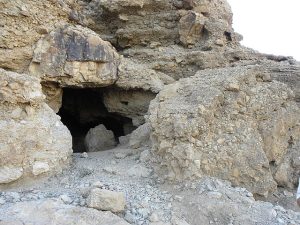Thematic Pesharim, Lawrence H. Schiffman, Reclaiming the Dead Sea Scrolls, Jewish Publication Society, Philadelphia 1994.
A text known as Florilegium was found in cave 4. Its name derives from the Latinized form of a Greek term for “anthology,” and this is indeed an anthology of biblical passages with messianic implications, at least as interpreted here. The manuscript has been dated to the end of the first century B.C.E. It is organized around selected biblical verses from a number of books- II Samuel (or I Chronicles), then Exodus, Amos, Psalms, Isaiah, Ezekiel, and, again, Psalms. It may be that this text is actually derived from earlier pesher texts of which this is an anthology.
Florilegium discusses three temples- the eschatological one to be built by God, the present one that is depicted as desecrated, and the “temple of man”—a reference to the sect that for its members replaces the Temple in the present age. The text goes on to discuss the Davidic messiah, who is expected to appear together with the eschatological interpreter of the law, probably to be seen as a sort of messianic Teacher of Righteousness.
Melchizedek is preserved in an early Herodian period manuscript found in cave 11. The author presents a series of pesher-like interpretations of various biblical texts from Leviticus, Deuteronomy, Isaiah, Psalms, and Daniel, in that order. The freedom of the biblical Jubilee is seen as symbolic of the eschatological redemption at the End of Days. Apparently the author understood time as divided into ten Jubilees, with the dawning of the End of Days to take place in the last. The biblical figure of Melchizedek, “priest of Salem, … priest of God Most High” (Genesis 14-18; cf. Psalms 110-4), is the main actor in the eschatological drama. He destroys the forces of evil and liberates and expiates the Sons of Light (the members of the sect).
Some of these texts will be considered again when we discuss the messianic aspects of Qumran literature. For our purposes now, it is important to observe that these texts use a variety of biblical passages dealing with messianic themes, which are interpreted symbolically in a manner very close to that of the pesharim. Unlike the pesharim, however, they do not contain historical references to the immediate life of the sect and its history.
Pages 230-231
What do you want to know?
Ask our AI widget and get answers from this website
